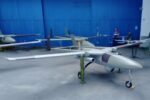European aerospace and defense leaders Airbus Defence and Space, Thales Alenia Space, and Leonardo have signed a landmark agreement to jointly develop the IRIS² (Infrastructure for Resilience, Interconnectivity and Security by Satellite) constellation. The program aims to establish a sovereign European satellite communications network that enhances secure connectivity for military and governmental users while competing with commercial mega-constellations like Starlink.
IRIS²: Europe’s Strategic Response to Starlink and Geopolitical Fragmentation
The IRIS² initiative is the flagship of the European Union’s secure connectivity program launched in 2022. It is designed as a multi-orbit satellite constellation primarily operating in Low Earth Orbit (LEO), with potential extensions into Medium Earth Orbit (MEO) or Geostationary Orbit (GEO). The system is intended to provide resilient government-grade communications for EU institutions, member states’ armed forces, emergency services, and critical infrastructure operators.
The project directly responds to growing concerns over Europe’s dependency on non-EU commercial providers such as SpaceX’s Starlink or Amazon’s Kuiper. With the increasing weaponization of space assets—evident in Russia’s jamming of GNSS signals over Ukraine and the proliferation of anti-satellite capabilities—the EU views autonomous access to secure space-based communications as critical to strategic sovereignty.
IRIS² also aligns with NATO’s evolving doctrine on Multi-Domain Operations (MDO), where assured C4ISR capabilities across terrestrial and orbital domains are essential for operational effectiveness. The constellation will complement existing systems like GOVSATCOM while integrating quantum encryption technologies for enhanced cybersecurity resilience.
Consortium Structure: Airbus Leads with Thales-Led Security Layer
The industrial consortium will be led by Airbus Defence and Space (Germany), with Thales Alenia Space (France/Italy) responsible for system security architecture. Leonardo (Italy) joins as a key partner contributing payload technologies and ground segment integration. Other members include SES (Luxembourg), Hispasat (Spain), Eutelsat (France), Deutsche Telekom (Germany), OHB System AG (Germany), Telespazio (Italy), Orange Business Services (France), Alénia Spazio France SASU, among others.
This structure reflects a deliberate balance between industrial capability distribution across major EU nations while leveraging specialized competencies:
- Airbus: Prime integrator; platform design; LEO bus manufacturing; constellation management
- Thales: Cybersecurity architecture; quantum key distribution integration; threat detection layers
- Leonardo: Payload electronics; optical inter-satellite links; command & control ground segment
The consortium plans to deliver initial capability by 2027 with full operational readiness targeted for 2030. The entire program is expected to involve over 20 companies from more than 14 EU member states plus Norway under the Permanent Structured Cooperation framework.
Funding Model: Blended Public-Private Investment Under EU Strategic Autonomy Goals
The IRIS² program is funded through a hybrid model combining public investment from the European Union—primarily via the European Defence Fund (€2.4 billion allocated)—and private capital commitments from consortium members. Additional funding streams may include national co-financing mechanisms through Ministries of Defence or Digital Infrastructure portfolios in participating countries.
This model mirrors recent trends in dual-use space procurement where commercial innovation cycles are leveraged alongside state-led strategic requirements. Notably:
- The EU contribution covers baseline capability development including launch services procurement
- Private sector partners invest in scalable infrastructure such as ground stations or value-added services platforms
- NATO interoperability standards are embedded from inception via STANAG compliance pathways
This approach allows flexibility in service tiering—from encrypted military-grade links for battlefield ISR relays down to broadband access for remote civilian areas during crises—while ensuring long-term economic viability through commercial service leasing models post-2030.
Differentiators vs Starlink & OneWeb: Security Layers & Government Control
While IRIS² will operate in LEO like Elon Musk’s Starlink or Eutelsat-OneWeb constellations, its architecture diverges significantly in purpose and security posture:
- Sovereign control: All command uplinks routed via EU-controlled gateways within member states’ territories
- Cyber-hardened design: End-to-end encryption using post-quantum cryptography standards under ETSI/ENISA guidance
- Spectrum protection: Coordinated ITU filings ensure protected frequency allocation against orbital crowding risks
- Diverse orbit mix: Planned MEO/GEO augmentation enables redundancy against kinetic ASAT threats targeting LEO assets
This positions IRIS² not just as a connectivity layer but as a strategic enabler for future EU military operations—including drone swarming coordination via SATCOM uplinks or dispersed HQ-to-HQ C2 continuity during terrestrial outages caused by jamming or cyberattack.
Tactical Implications for Military Users Across Europe
The deployment of IRIS² will have direct tactical benefits across multiple domains of operation:
- C4ISR Resilience: Persistent overhead coverage enables real-time data relay from UAVs/UCAVs even in denied environments like Eastern Europe or Arctic zones.
- BLOS Communications: Beyond Line-of-Sight SATCOM terminals integrated into armored vehicles or naval platforms extend command reach without reliance on vulnerable terrestrial relays.
- MILSATCOM Interoperability: Designed with NATO waveform compatibility including Link-22/Link-16 bridging layers for joint operations with U.S./UK forces.
- Crisis Response Enablement: Rapid deployable terminals can support disaster relief missions under EU Civil Protection Mechanism using prioritized bandwidth slices.
This could transform how smaller EU militaries operate expeditionary missions without relying on U.S.-provided SATCOM backbones—a key objective outlined in the Strategic Compass adopted by the Council of the European Union in March 2022.
Toward Operationalization: Next Steps & Industrial Risks
The next phase involves detailed design finalization by late Q3 2024 followed by subsystem prototyping across various national facilities. Initial satellite launches are projected between mid-2026 and early-2027 using ArianeGroup launchers under Arianespace contracts—though alternate launch providers may be considered due to Ariane6 delays.
Potential risks include supply chain bottlenecks affecting radiation-hardened components sourcing amid global semiconductor shortages; regulatory delays around spectrum coordination at ITU level; or political friction among member states regarding service prioritization protocols during conflict scenarios.
If successfully executed, however, IRIS² could become Europe’s most significant defense-space infrastructure since Galileo—and a blueprint for future dual-use constellations blending sovereignty with scalability across both civil protection missions and high-end warfighting scenarios alike.










